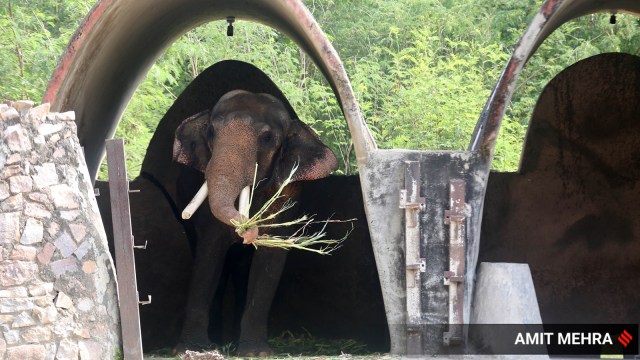With all-round efforts and monitoring, elephant ivory and rhinoceros horn trafficking has shown a decline globally, however, there is no clear reduction in wildlife trafficking, the third edition of the United Nations’ World Wildlife Crime Report said.
“The good news is that data shows a decline in ivory trade. We still have some large seizures, but overall triangulating data, the seizures and the prices all point to a shrinking market for ivory. Efforts on the demand side such as closure of Chinese markets and clamping down of organised crime groups have helped,” said Angela Me, chief of the Research and Trend Analysis Branch, United Nations Office on Drugs and Crime (UNODC), during the report launch in Vienna on Monday.

The report by UNODC said that over the past decade, poaching, seizure levels and market prices have “declined solidly” for ivory and rhino horn.
Story continues below this ad
The report analysed global data and trends in wildlife trafficking from the period 2015-2021 and found that seizures of wild animals and plant species were recorded in 162 countries. These involved 4,000 plant and animal species and 3,250 of those were protected under the Convention on International Trade in Endangered Species of Wild Fauna and Flora (CITES), a global treaty. The treaty regulates trade in animals and plants based on the level of threats they face.
Elephants, crocodilian species, corals, carnivores, snakes, turtles, rosewood, pangolins, turtles and tortoises and bivalve molluscs were the animal and plant species that figured most commonly in seizures made of wildlife and their body parts.
In terms of broad markets, rhinos, pangolins and elephants were the top three traded wildlife species. In plants, cedars, rosewoods and agarwood were high in demand.
In cases of certain plants and animals, like orchids, for instance, the rarity of species is a driving force behind the trade.
Story continues below this ad
Key among the drivers behind wildlife and plant trafficking were reasons such as food, medicine, animal collection, pet trade and making fashion products and adornments out of body parts. The report noted that each category of demand comprises its own set of trade dynamics. For instance, the report pointed out, the factors that affect demand for python skins for fashion trends are different from those that affect demand for its meat or pet trade.
India too has seen a spate of wildlife seizures at airports, seaports and land borders, especially in states such as Mizoram and Manipur. The Department of Revenue Intelligence seized 1,652 mammals, birds, reptiles and amphibian species in 2022-23, as per the Smuggling in India Report 2022-23. About 40 per cent of the seizures were classified as threatened or near threatened species
Wildlife crime control expert and Chief Executive Officer of Wildlife Trust of India Jose Louies said that India is witnessing a shift in illegal trade as the demand for live animals, especially exotic ones as pets, is on the rise. The involvement of educated people on both, demand and supply sides, is seen, Louies said, citing the use of the internet to carry out such trade.
“The traditional definition of a wildlife trafficker is changing. There are people buying, selling and bartering animals on the internet. The exotic pets can also turn invasive and pose a threat to our local ecosystems and wildlife. This poses a threat to our local ecosystems and species,” Louies said.
Story continues below this ad
The UN report, too, noted that among the harms of illegal wildlife trade are issues such as biodiversity degradation, the threat of extinction and the threat of invasive species taking over local habitats.









